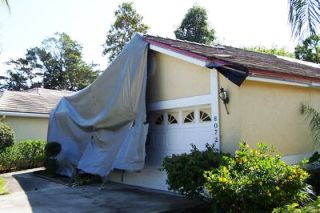|
Article Courtesy of The Palm
Beach Post
By Kimberly Miller
Published March 17, 2014
Florida’s real estate market remains haunted by decaying and abandoned properties even as new foreclosures slow and home values rise.
These so-called “zombie” foreclosures — properties forsaken by both the bank and borrower — number 54,900 statewide, including 14,600 in Palm Beach, Broward and Miami-Dade counties, according to a new report from
RealtyTrac.
|
The concentration in Florida makes it tops in the nation for zombie foreclosures, with South Florida ranking first among large metro areas.
Illinois has the second highest number of vacant foreclosures by state at 15,510, followed by New York with 10,880. Among metro areas, Tampa-St. Petersburg ranks second nationally, with Chicago coming in third.
“The reality is that new foreclosure activity is no longer the biggest threat to the housing market,” said Daren Blomquist, RealtyTrac vice president. “The biggest threat from foreclosures going forward is properties that have been lingering in the process for years, many of them vacant with neither the homeowner nor the lender taking responsibility for maintenance and upkeep.”
Many of the homes are stuck in limbo because banks filed to foreclose on them years ago, but then walked away from the case after realizing
it didn’t make financial sense to take the home |
|
This home on Burlington Court in suburban Lake Worth was foreclosed on by JPMorgan Chase in 2010 and abandoned by the homeowner. The bank has yet to receive a final judgment on the property so its upkeep is technically the responsibility of the homeowner. The county has placed a lien on the home, but the neighbors are concerned that its not being maintained and has a large hole in the roof.
|
back, said Nicole Clowers, director of the U.S. Government Accountability Office.
Clowers and Blomquist spoke Tuesdayduring a housing conference sponsored by the Federal Reserve Bank of Cleveland.
New foreclosure filings nationwide were at their lowest level in February since December 2005, according to RealtyTrac. In Florida, new foreclosures were down 53 percent from the same time last year, while Palm Beach County’s clerk’s office recorded just 518 new cases in
February -- a 49 percent drop from 2013.
It’s still unclear, however, whether the drop in Florida foreclosures is a permanent change or a temporary trend while banks catch up to a new law that went into effect in July.
U.S. Postal Service information on vacancies was used to study the issue of abandoned foreclosures. But the Government Accountability Office also had access to bank records, leading it to the conclusion that lenders will walk away from a foreclosure if it’s too costly to repossess.
“In some cases they initiate the foreclosure and then realize it’s going to be a money-losing venture and stop,” Clowers said.
Suburban Lake Worth resident Mike Herndon doesn’t know if that’s what happened to a moldering house in his neighborhood on Burlington Court, but he’s frustrated the home isn’t being maintained by the bank or owner.
JPMorgan Chase filed to foreclose on the home in 2010, according to Palm Beach County court records. Herndon said the owner left soon after. The most recent court action taken was in July 2013, but there is still no final judgment. A message to Chase was not returned by deadline.
The Burlington Court home has slowly deteriorated. A leak in the roof turned into a large hole that different property maintenance firms have repeatedly tried to cover with a tarp. Last Thursday’s heavy winds pulled the tarp off again, taking roof tiles with it.
Palm Beach County put a $50-a-day lien against the home in July.
“I have been writing letters and emails for the better part of three years trying to get this property taken care of,” Herndon said.
|
